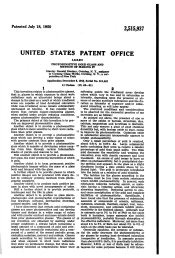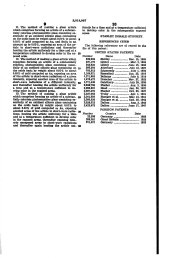Gaffer® Photosensitive Glasses
For the first time, Gaffer Coloured Glass offers photosensitive glasses suitable for use as a casing glass for the studio glassblower. Although noble metal photosensitive glasses were developed by Dalton and later Stookey, at Corning, during the Second World War (and kept under wraps by the US government until the war ended), they were never much exploited by Corning. They offered them largely as a novelty glass in the 1950’s and 60’s.
Gaffer Glass has reworked the original recipes, in order that the glasses will be compatible with typical soda lime glasses used by the studio artist. Particular attention has been paid to aligning the properties of expansion, viscosity and durability.
Properties and Application
Gaffer photosensitive glasses can be used in the same way as any other casing glass, either as an inner or outer casing, or as an interlayer. They are soft, and easily worked. In order to exploit their properties, however, these glasses must be able to be exposed to ultraviolet light in the finished piece. Think of the glass rod as virtually like filmstock. It must be kept in the tube we supply until ready to use for blowing. After finishing a blown piece, that also must be kept in the dark until it is ready to be masked and then exposed and developed.
Although photosensitive glasses are not anywhere near as sensitive as film, the ambient levels of UV light in a room will still be sufficient to “spoil” the glass after a day or two. Avoid direct sunlight. A “spoiled” glass, however, simply becomes an ordinary gold ruby or silver yellow, on being reheated, so is not completely wasted.
Exposure
The exposure of photosensitive glass is in many respects similar to that of ordinary photographic material. It differs mainly in the fact that exposure requires UV radiation, and usually requires considerably more time. The wavelength of light required is important, being between 300-350nm, and preferably peaking at 320nm. Sunlight can work, particularly at sunburn strength, but the results are variable. More consistent results are obtained by the use of commonly available fluorescent suntan tubes. Philips TLK 40W/10R low pressure mercury vapour fluorescent tubes are ideal. They are available in 600mm (2 foot) lengths. Other suntan tubes offer similar specifications. They should all be branded UV-A.
Note: Not all UV lamps are the same. Some lamps for instance, used for curing silk screening dyes or photo printing etc. may have the wrong wavelength for this application. Exposure at a distance of 100-150mm (4-6 in) for about 20-40 minutes is sufficient for most effects. An even exposure of a vessel can be achieved with an old record turntable. With the gold ruby glass, short exposures will give blue through to purples; longer exposures will give a true ruby. Increasing exposure with silver based glasses results in an increasingly deeper and stronger yellow colouration. The colours produced, and the density of the hue, depend on exposure time and intensity, but importantly, also on development temperature, and time. After UV exposure, only a “latent image” results, which is not visible. Development by heat is still required.
UV Resists.
Anything which resists UV light can act as a resist or negative. For photographic resolution the most efficient material is adhesive polyester as a reverse negative, available from specialist photographic suppliers. However, anything which can stop UV is suitable. Felt tip pens, Letratone, bromides, masking tape etc. are all effective to varying degrees.
Development
Unlike ordinary film, which requires chemicals to develop the image, photosensitive glasses simply require heat. For silver glasses the “latent image” will develop in 3-4 hours at 475-525oC (886-976oF)
For the ruby glass a higher temperature of 520-575oC (968-1058oF) is required over a similar period of time. The higher the temperature, the quicker the development. The term “latent image”, refers to the fact that simply exposing the glass to UV light will not make visible the colour. The colour centers are “latent” until developed by heat. If the glass is slumping, then simply lower the temperature, and take more time for the image to develop. Only by heating to the correct temperature range, for long enough, will the latent image reveal itself or strike.
As with exposure, short heating times, and low temperatures, will produce blues and purples with the gold ruby: high temperatures for longer periods promote the true ruby shade. The silver yellow deepens in hue with long exposure and development.













